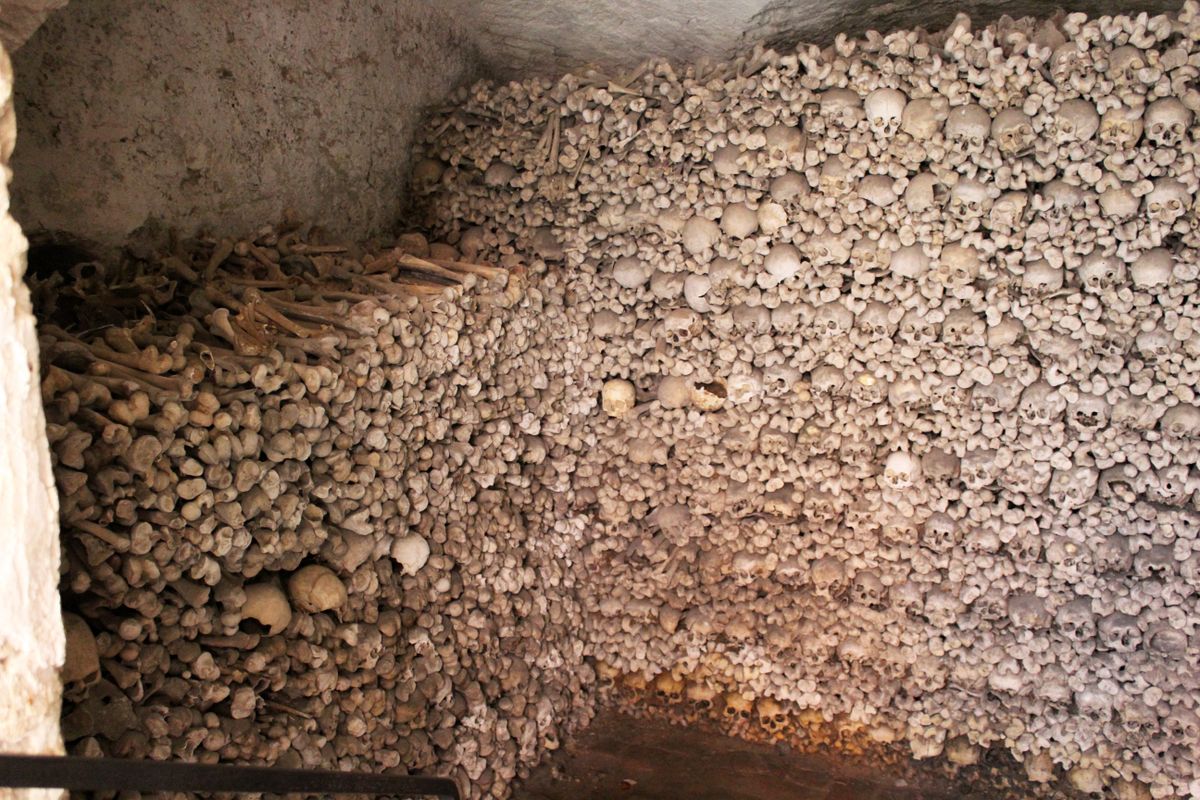About
Sitting unsuspectingly behind the Church of St Katharin in Oppenheim, Germany is a relatively small building that looks a tad sinister thanks to its severe angles, but inside is something much more gothic: BONES!
The Church of St Katharin, which began construction in 1225, is home to some impressive and rare 14th century stained glass windows that have managed to survive centuries and wars, but it is what lays behind the historic church that is of special note. In the Michaelskapelle (Chapel of St Michael) lies one of the largest ossuaries in Germany, housing the skeletal remains of over 20,000 Oppenheim residents who died between 1400-1750 CE. The honored dead ended up in the ossuary thanks to a laundry list of reasons, but a number of them are thought to have been killed as a result of famine and war.
The longer bones are stacked like cord wood, creating an unbroken bulwark of bones, punctuated by skulls that are set into the wall at irregular intervals. While the stacks of bones don't quite reach to the ceiling, it is thought that they did at one time go all the way up, but have slowly compressed themselves over the centuries, making the collection seem somewhat smaller, but not by much.
The ossuary is generally closed, but the bones can usually still be seen through the bars of the door gate. However, special tours of the space can be arranged. In fact many of the skulls bear the marks of small hands where children have touched the skulls to see if they're real.
Related Tags
Know Before You Go
The ossuary is in the bottom floor of the Michaelskapelle, a small chapel just behind the large gothic Church of St Katherine. Much of the ossuary can be viewed through a locked gate when visiting without a tour, but you must join (or arrange) a tour in order to actually enter the ossuary.
Published
January 20, 2016
































